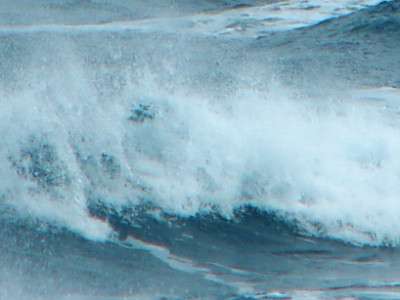Ocean upwelling and increasing winds

As the southern westerly winds drive the Antarctic circumpolar current around Antarctica, deep waters are forced up to the surface south of the polar front. Changes in the intensity with which this relatively warm, nutrient and CO2-enriched Circumpolar Deep Water (CDW) upwells has significant implications for glacier melt, sea-ice cover, primary productivity and the global carbon budget. With the southwards migration and strengthening of the Southern Westerly Winds (SWW) observed in recent decades predicted to continue, enhanced upwelling of CDW is also anticipated. To determine/assess whether this expectation is realistic, we look to the past and investigate the relationship between CDW upwelling and the SWW.
We analysed a range of benthic and planktonic microfossils from a marine sediment core within inner Marguerite Bay, west Antarctic Peninsula, to reconstruct oceanic conditions over the last 10,000 years. For the first time, a suite of paleo-proxies documenting open-ocean influence, sea-ice cover, sea-floor and sea-surface temperatures, rates of primary productivity and water column structure, are used to reconstruct the influence of CDW within Marguerite Bay. We show that the intensity with which CDW is upwelling onto the west Antarctic Peninsula today has not occurred for ~7,000 years. We also determine that CDW upwelling was even greater between 9,700 and 7,000 years ago, a time when the southern westerly wind belt was in a more southerly position than present. Our records therefore substantiate the close coupling of intensified/more poleward southern westerly winds with enhanced penetration of warm CDW onto the west Antarctic Peninsula continental shelf.
Given the response of CDW upwelling to modest Holocene climate variability demonstrated here, we conclude that continued intensification and poleward migration of the southern westerly winds in coming decades will further intensify warm-water upwelling onto the west Antarctic Peninsula continental shelf. Greater CDW upwelling will threaten ice shelf stability and limits the capacity of the Southern Ocean to act as a sink for anthropogenic CO2.
More information: "Oceanographic variability on the West Antarctic Peninsula during the Holocene and the influence of upper circumpolar deep water," Quaternary Science Reviews, Volume 119, 1 July 2015, Pages 54-65, ISSN 0277-3791, dx.doi.org/10.1016/j.quascirev.2015.04.002
Journal information: Quaternary Science Reviews
Provided by British Antarctic Survey

















